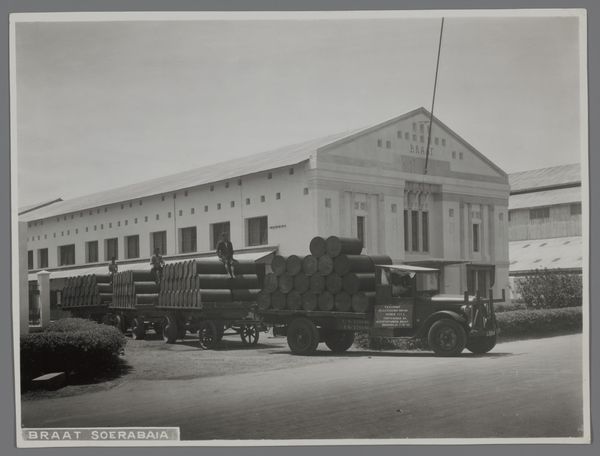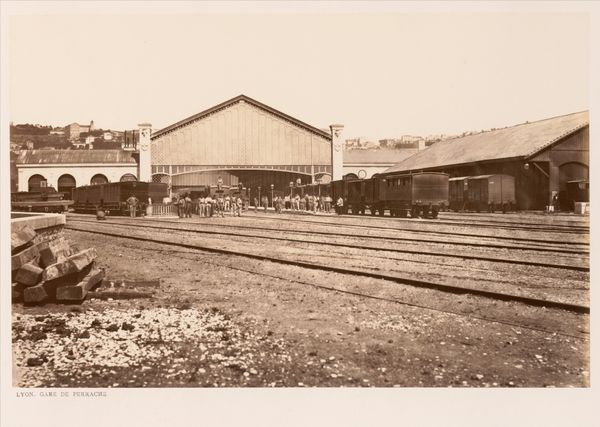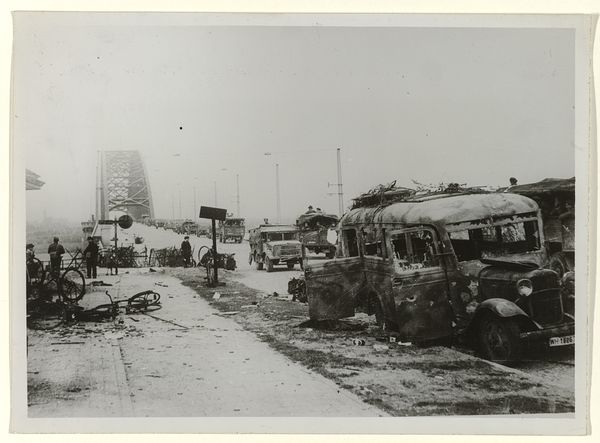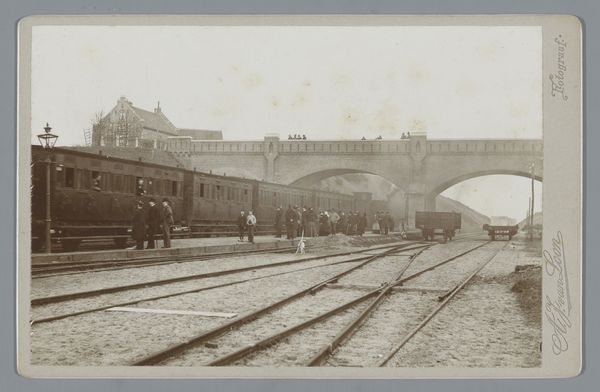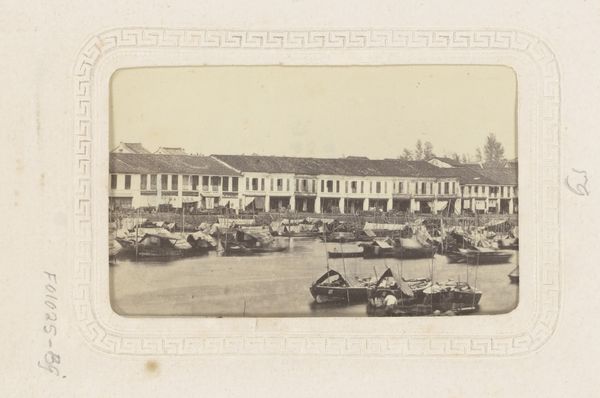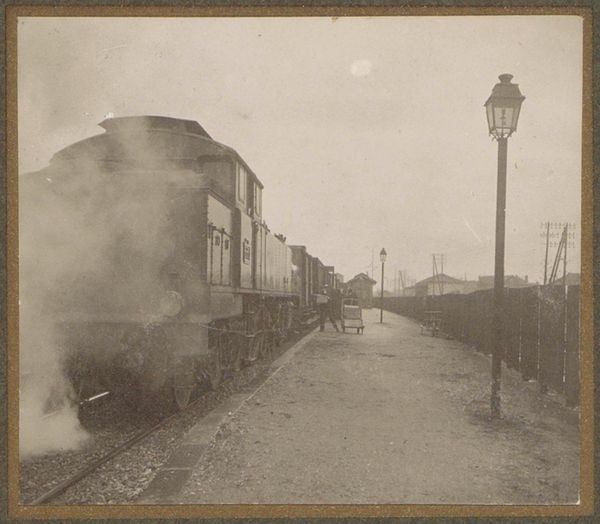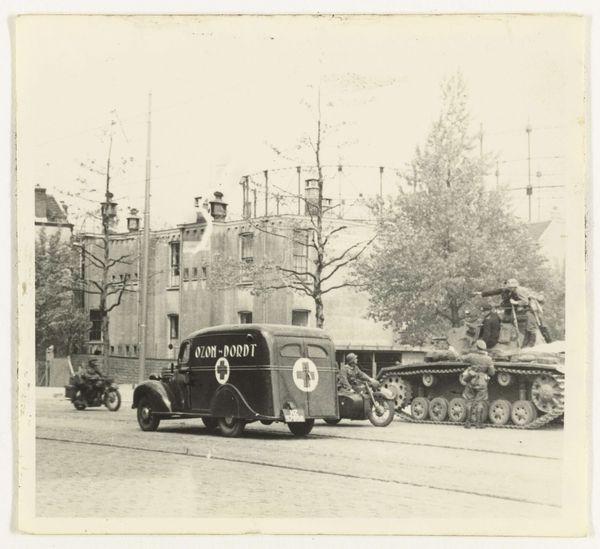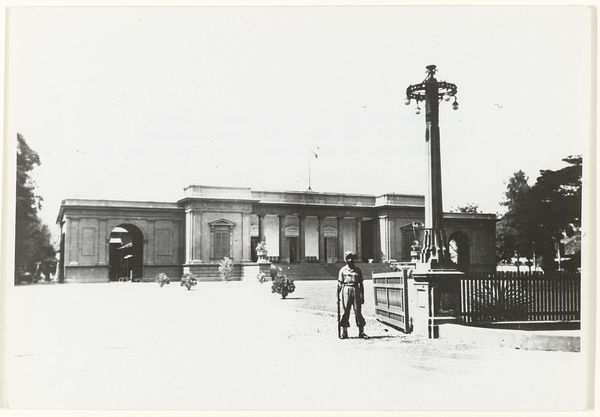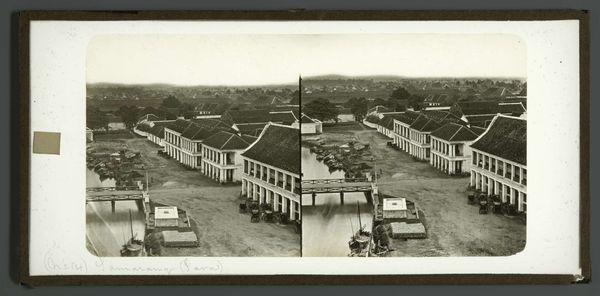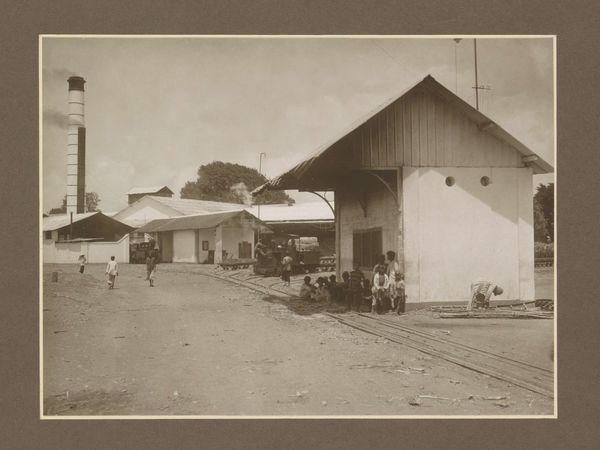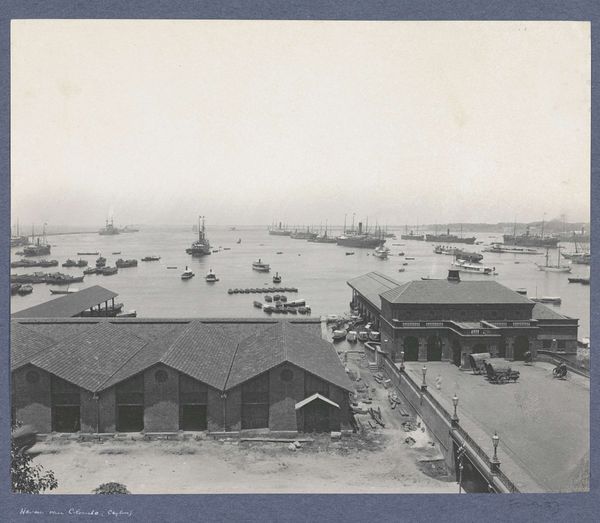
print, photography
#
aged paper
#
reduced colour palette
#
muted colour palette
#
photo restoration
# print
#
desaturated colours
#
light coloured
#
landscape
#
photography
#
desaturated colour
#
photo layout
#
cityscape
#
paper medium
#
soft colour palette
#
realism
Dimensions: height 170 mm, width 230 mm
Copyright: Rijks Museum: Open Domain
Editor: This photograph, “Remise Djatiroto,” was created by Atelier Kurkdjian between 1931 and 1934. It's a print, quite monochromatic and soft. The composition, with the receding railway lines and trains, creates a sense of depth. How do you approach analysing a photograph like this from a formalist perspective? Curator: The allure of "Remise Djatiroto" resides precisely in its composition and tonal gradations. Note how the artist utilises linear perspective. The receding parallel lines of the tracks are not merely representative; they create a rigorous structure, defining spatial relationships within the picture plane. The eye is relentlessly drawn toward a vanishing point, generating the photograph's formal dynamism. What do you notice about the use of light and shadow? Editor: Well, it's very subtle. The limited tonal range creates an almost dreamlike quality, a kind of muted reality. Nothing really stands out in stark contrast. Curator: Precisely. The photograph refrains from employing stark contrasts. Instead, it relies on a delicate interplay of light and shadow to define form. Consider the nuanced way the light falls across the surfaces of the trains and the building in the background. It’s this delicate balancing act that gives the work its peculiar aesthetic quality. Also, observe the way the photograph exploits the texture inherent to the print medium, lending another layer of complexity to its aesthetic architecture. How do you think that affects our reading? Editor: It makes the image feel more tangible and physical, almost like you could reach out and touch the scene despite the distance and age. I hadn't considered how much the texture contributes to the feeling of the work. Curator: Indeed. Through such careful manipulations of form and tonality, photography transcends its mere descriptive function, becoming a self-referential aesthetic object. Editor: I see how focusing on the formal elements can reveal so much about the artistic choices and their impact. Curator: And how these contribute to its overall aesthetic effect! There is still so much to look for and to analyze.
Comments
No comments
Be the first to comment and join the conversation on the ultimate creative platform.
